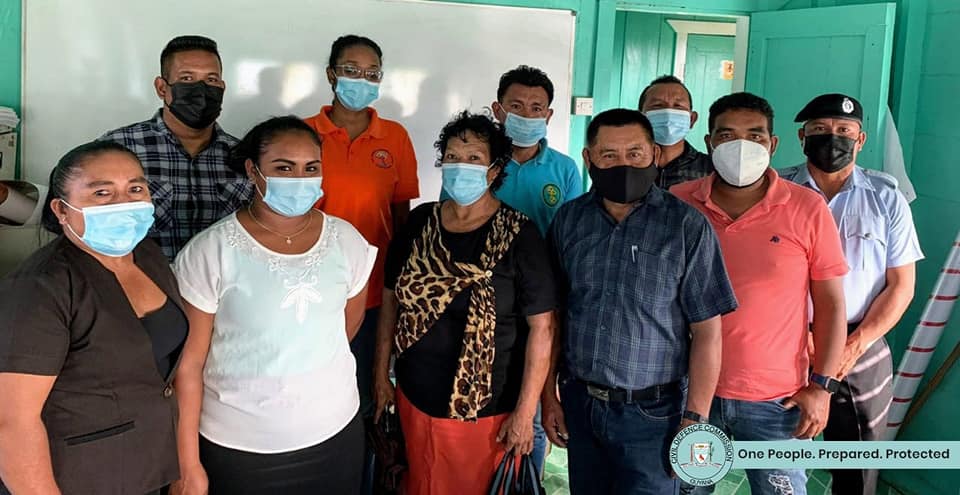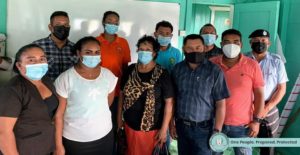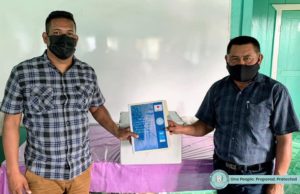- September 1, 2021
- Posted by: Patrice Wishart
- Categories: disaster management, News, Projects, Volunteer
No Comments

The Civil Defence Commission (CDC), being the coordinating agency for Disaster Risk Management in Guyana, has embarked on an initiative to strengthen and enhance Community Based Early Warning Systems (CBEWS) in vulnerable coastal, hinterland and indigenous communities across Guyana. The project entails the incorporation of CBEWS into the already implemented Community Based Disaster Risk Management (CBDRM) system in hazard-prone coastal, hinterland and indigenous communities in partnership with the United Nations Development Programme (UNDP) Strengthening Disaster Management Capacity of Women in the Cooperative Republic Guyana and the Commonwealth of Dominica Project.
Through this partnership project, 20 coastal and 4 hinterland communities were identified across Mahaica-Berbice, East Berbice-Corentyne, Cuyuni-Mazaruni, Potaro-Siparuni, Upper Takutu-Upper Essequibo and Upper Demerara-Berbice (Regions 5 to 10 respectively). Community leaders from those identified communities and other government stakeholders are being trained as implementers/facilitators to assist with the successful application of the CBEWS project. Prior to the Covid-19 pandemic, which caused the project to be stalled, CBEWS was successfully initiated in all shortlisted communities and, established in the Union/Naarstighied Neighbourhood Democratic Council (NDC) of Region 5, and Kwakwani in Region 10.
To resume project work despite the pandemic and in keeping with COVID-19 protocols, a virtual pilot was designed by the CDC to utilise virtual platforms and digitized materials (presentations, animations, workbooks, etc.) in efforts to raise CBEWS awareness in Fort Ordinance (Region 6), Lethem (Region 9) and Kamarang (Region 7). Additionally, the aim is to build Disaster Risk Management skillsets for participatory risk assessment among community members (especially in women, children, farmers, the elderly, people living with disabilities and all other vulnerable groups), and increase knowledge on vulnerability and capacities in those communities. The rolling out of this pilot however, was faced with the continued heavy rains and recent flood disaster which significantly affected these targeted communities.
Thus far, the virtual pilot was successfully executed at two different communities. In Lethem (Region 9) it was spearheaded by Ms. Keisha Vincent, Town Clerk, who facilitated the sessions on July 27th- 29th, 2021. Ms. Vincent conducted and coordinated the workshop, with the support of CDC personnel who joined virtually. A total of 17 community members participated, some of which were religious leaders, women, farmers and regional officers. Workshop participants were introduced to the terminology in CBEWS, Gender and cross cutting issues in Disaster Risk Management, Early Warning Systems (EWS), and Data Collection for participatory risk assessments. In Kamarang (Region 7), a total of 10 persons benefitted from training including the Toshao Mr. Lemmel Thomas, Assistant Regional Executive Officer Mr. Deon Seecharan, and representatives from National Agricultural Research Institute (NAREI), the Kamarang Hospital, the Kamarang Police Station and the Kamarang Village Council.
The next step includes a Zoom call to test the reliability of the internet in the selected areas. It was also proposed that some participants can utilise the internet provided by the National Data Management Authority (NDMA) Information and Communication Technology (ICT) Hub at the Fort Ordinance NDC or data can be provided for participants to join.


